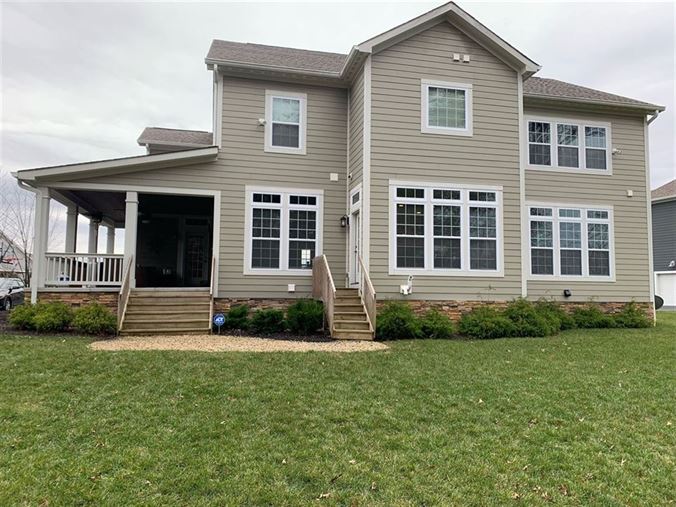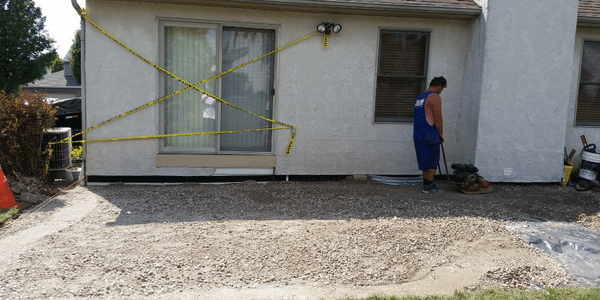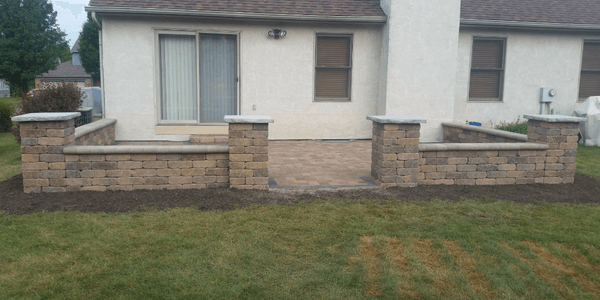Frequently Asked Questions
What is the rule of 3 in landscaping?
The rule of 3 in landscaping refers to the practice of grouping plants in threes for a more visually appealing design. This technique creates balance, harmony, and a dynamic look in outdoor spaces, enhancing overall landscaping aesthetics.
Is it worth it to hire a lawn service?
Hiring a lawn service is worth it for those seeking a well-maintained yard without the time and effort required for DIY care. Professional services ensure expert treatments and consistent upkeep, enhancing your property's appearance and value.
What plants work well in landscaping?
The plants that work well in landscaping include a mix of native species, ornamental grasses, flowering shrubs, and evergreens. These options enhance visual appeal while ensuring low maintenance and resilience to local climate conditions.
How do I maintain my landscape design?
Maintaining your landscape design involves regular tasks such as watering, weeding, mulching, and pruning plants to ensure they stay healthy and vibrant. Additionally, seasonal adjustments and soil management are essential for long-term beauty and functionality.
What are the benefits of landscaping services?
The benefits of landscaping services include enhancing property aesthetics, increasing property value, improving outdoor functionality, promoting environmental health, and providing a relaxing space for enjoyment and recreation.
How often should I trim my shrubs?
The frequency of trimming shrubs depends on the type of shrub and the desired shape. Generally, it's advisable to trim most shrubs once or twice a year for optimal health and appearance.
What is the best time for landscaping?
The best time for landscaping is typically during early spring or fall when temperatures are moderate, promoting optimal plant growth and minimizing stress on new installations. These seasons allow for effective establishment of plants before extreme weather conditions.
How to choose plants for my area?
Choosing plants for your area involves considering local climate, soil type, and sunlight exposure. Research native species that thrive in your environment to ensure optimal growth and sustainability.
What tools are essential for lawn care?
Essential tools for lawn care include a good quality lawn mower, trimmer, rake, and aerator. Additionally, items like gardening gloves and seed spreaders enhance maintenance efficiency and ensure a healthy, attractive lawn.
How can I improve my lawns health?
Improving your lawn's health involves regular mowing, proper watering, fertilization, and aeration. Additionally, consider controlling pests and weeds, and choose appropriate grass types suited to your climate for a lush, green appearance.
What types of landscaping services are available?
The types of landscaping services available include lawn care, garden design, hardscaping, tree and shrub maintenance, irrigation system installation, and seasonal clean-up. These services are tailored to enhance the beauty and functionality of outdoor spaces.
How much time does landscaping maintenance require?
Landscaping maintenance requires varying amounts of time depending on the size of the property and the complexity of the services. On average, you can expect to spend a few hours per month for routine upkeep.
What are common landscaping mistakes to avoid?
Common landscaping mistakes to avoid include poor site selection, overplanting, neglecting soil quality, ignoring local climate conditions, and failing to plan for maintenance. These errors can hinder the growth and beauty of your landscape.
How do I budget for landscaping projects?
Budgeting for landscaping projects involves assessing your goals, determining a realistic budget range, and itemizing costs such as materials, labor, and maintenance. Prioritize essential features while leaving room for potential upgrades to ensure a successful project.
What are the latest landscaping trends?
The latest landscaping trends include sustainable practices, such as native plant gardens and xeriscaping, as well as the incorporation of smart technology for irrigation and outdoor lighting, creating functional and eco-friendly outdoor spaces.
What is organic landscaping and its benefits?
Organic landscaping is an environmentally friendly approach to garden design and maintenance that emphasizes the use of natural materials and processes. Its benefits include improved soil health, reduced chemical exposure for humans and wildlife, and enhanced biodiversity in outdoor spaces.
How can landscaping increase property value?
Landscaping can significantly increase property value by enhancing curb appeal, creating a welcoming environment, and improving overall aesthetics. Well-designed outdoor spaces often attract potential buyers, making properties more desirable and ultimately boosting their market value.
What should I consider for landscape lighting?
When considering landscape lighting, you should evaluate the purpose of the lighting, the types of fixtures that will enhance your outdoor spaces, energy efficiency, and the overall design to ensure safety and aesthetic appeal.
How can I create a sustainable landscape?
Creating a sustainable landscape involves using native plants, efficient irrigation methods, and organic practices to minimize environmental impact. Prioritizing biodiversity and reducing maintenance needs will help maintain a healthy and eco-friendly outdoor space.
What steps are involved in landscape installation?
The steps involved in landscape installation include planning and design, site preparation, soil amendment, installation of plants and hardscapes, and final touches like mulching and irrigation setup to ensure a thriving outdoor space.
How to prepare soil for new landscaping?
Preparing soil for new landscaping involves clearing debris, testing pH levels, and amending with organic matter. Loosen the soil to improve drainage and nutrients, and ensure it's level to facilitate proper water flow before planting.
What is xeriscaping and why use it?
Xeriscaping is a landscaping method that emphasizes water conservation through the use of drought-resistant plants and efficient irrigation techniques. It is beneficial for minimizing water usage and creating sustainable outdoor spaces.
How can I prevent weeds in my landscape?
Preventing weeds in your landscape involves regular maintenance. Utilize mulch to suppress growth, maintain healthy soil through proper watering and fertilization, and implement landscape fabrics in flower beds to block weed emergence. Regularly monitor for new weeds and remove them promptly.
What are the signs of a healthy lawn?
The signs of a healthy lawn include vibrant green color, dense grass coverage, and resilience to foot traffic. Additionally, a healthy lawn has deep roots, minimal weeds, and a balanced moisture level, indicating proper care and maintenance.
How do I select the right landscaping contractor?
Selecting the right landscaping contractor involves researching potential providers, checking reviews and references, ensuring they have proper licenses and insurance, and evaluating their portfolio to match your specific landscaping needs and style preferences.
What are effective ways to water my lawn?
Effective ways to water your lawn include watering early in the morning to reduce evaporation, using a soaker hose for efficiency, and ensuring even coverage with irrigation systems or sprinklers. Aim for deep, infrequent watering to promote root growth.
How can I design a small yard creatively?
Designing a small yard creatively involves maximizing space through vertical gardening, choosing multifunctional furniture, and incorporating unique landscape features like small patios or pathways. Use plants wisely to create depth and diverse textures for a visually appealing environment.
What materials are best for hardscaping?
The best materials for hardscaping include natural stone, brick, pavers, concrete, and gravel. Each provides durability and aesthetic appeal, making them ideal options for patios, walkways, and garden features.
How to incorporate outdoor lighting in landscaping?
Incorporating outdoor lighting in landscaping involves strategically placing lights to highlight features such as pathways, trees, and garden beds. Consider using a blend of fixtures like spotlights, uplights, and string lights to enhance safety and aesthetics.
What is a landscape maintenance schedule like?
A landscape maintenance schedule consists of regular tasks such as mowing, edging, pruning, fertilizing, and seasonal clean-ups, ensuring your outdoor space remains healthy, attractive, and well-maintained throughout the year.














